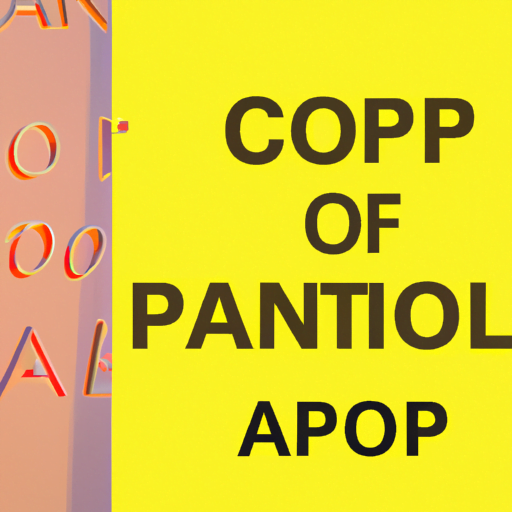-
Table of Contents
Typography Trends: Playing with Fonts and Text
Typography is an essential element of design that can greatly impact the way we perceive and interact with written content. As technology advances and design trends evolve, typography has become more than just selecting a font; it has become a powerful tool for communication and expression. In this article, we will explore the latest typography trends and how designers are playing with fonts and text to create visually stunning and engaging experiences.
The Rise of Variable Fonts
Variable fonts have gained significant popularity in recent years due to their flexibility and adaptability. Unlike traditional fonts that come in fixed styles and weights, variable fonts allow designers to adjust various attributes such as weight, width, and slant within a single font file. This versatility enables designers to create unique and dynamic typographic compositions.
One notable example of variable fonts in action is the website of the Museum of the Moving Image. The site utilizes the variable font “Decovar” to create an animated and interactive typographic experience. As users scroll through the site, the font’s weight and width change, adding a sense of movement and playfulness to the text.
Experimental Typography
Designers are pushing the boundaries of typography by experimenting with unconventional layouts, compositions, and interactions. This trend allows for more creative and expressive typographic designs that capture attention and evoke emotions.
A great example of experimental typography is the “Design Disruptors” documentary website. The site features bold and dynamic typography that interacts with the user’s cursor movements. As users move their cursor, the text distorts and transforms, creating an engaging and immersive experience.
Combining Multiple Fonts
Another trend in typography is the use of multiple fonts within a single design. By carefully selecting and pairing complementary fonts, designers can create visual hierarchy, add emphasis, and convey different tones or moods.
The website of the “New York Times Magazine” is an excellent example of effective font pairing. The site combines a serif font for the body text with a bold sans-serif font for headings and subheadings. This combination creates a harmonious and balanced typographic system that enhances readability and visual appeal.
Custom Typography
Custom typography is a trend that has been gaining traction in recent years. Designers are creating unique and bespoke typefaces to add a personal touch and reinforce brand identity. Custom fonts allow brands to stand out from the crowd and create a consistent visual language across various touchpoints.
A well-known example of custom typography is the Coca-Cola logo. The iconic script font used in the logo was specifically designed for the brand, giving it a distinct and recognizable identity. The custom font has become synonymous with the brand and is instantly associated with Coca-Cola.
Minimalism and Simplified Typography
In contrast to the experimental and bold typography trends, minimalism and simplified typography have also gained popularity. This trend focuses on clean and straightforward designs, with an emphasis on legibility and clarity.
The website of “Apple” is a prime example of minimalistic typography. The site utilizes a simple sans-serif font with ample white space, allowing the content to take center stage. The clean typography enhances the user experience and reinforces Apple’s brand image of simplicity and elegance.
Typography for Accessibility
Accessibility is a crucial consideration in design, and typography plays a significant role in ensuring content is accessible to all users. Designers are increasingly incorporating inclusive typography practices to improve readability and usability for individuals with visual impairments.
One example of inclusive typography is the “OpenDyslexic” font. This font is specifically designed to make reading easier for individuals with dyslexia. The font incorporates subtle changes to letterforms, such as heavier bottoms, to reduce letter swapping and improve readability.
The Impact of Typography on User Experience
Typography is not just about aesthetics; it has a profound impact on user experience. Well-designed typography can enhance readability, guide users through content, and evoke emotions. On the other hand, poor typography choices can lead to frustration, confusion, and a negative user experience.
According to a study conducted by the Software Usability Research Laboratory, typography significantly affects reading performance and user satisfaction. The study found that participants preferred reading content with good typography, such as appropriate font size, line spacing, and contrast.
Furthermore, a study by the Nielsen Norman Group revealed that users pay more attention to content when it is presented in a readable and visually appealing manner. Typography that is easy to read and aesthetically pleasing can increase engagement and comprehension.
Conclusion
Typography trends are constantly evolving, and designers are continuously pushing the boundaries of what is possible with fonts and text. From variable fonts to experimental typography, the use of multiple fonts to custom typography, each trend offers unique opportunities for designers to create visually stunning and engaging experiences.
When incorporating typography into design, it is essential to consider the target audience, brand identity, and accessibility. By understanding the impact of typography on user experience and leveraging the latest trends, designers can create compelling and effective designs that captivate and communicate effectively.
